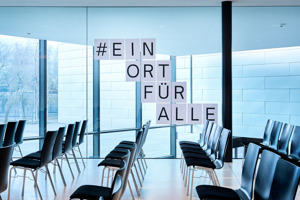people are what make an event successful
Convention Partner Vorarlberg plays a central role for many organisers. The team handles everything event planners might need – from room bookings and participant registration to accommodation, social programmes, and final billing. The Convention Bureau also deeply explores event culture, especially what makes an event truly engaging. Through research groups, they gather insights and practical tips for meaningful formats. One thing is certain for Katrin Preuß, Head of Convention Partner Vorarlberg: people are what make an event successful.
Have you ever been to a poor event?
Yes, unfortunately – and I think almost everyone has. It’s disappointing when you invest time, energy, and possibly travel, only to feel it wasn’t worth it.
What do you think went wrong?
Usually, two key elements are missing: either there's no clear focus or purpose, or the programme is overloaded, leaving no time for real interaction or reflection. One often overlooked factor is the setting – events need people who create a welcoming atmosphere. The art of hosting is crucial to making an event feel human, not superficial.
Do in-person events still make sense in the age of video conferencing?
Absolutely. Video calls are helpful, especially for sharing information. But genuine interaction only happens face-to-face. If people are to exchange ideas and learn together, physical presence is essential.
Your website says you aim to turn traditional meetings into transformative experiences. What does that mean?
We believe events can be more than PowerPoint presentations and rows of chairs. Transformation happens when we treat events as opportunities – as spaces where people meet, generate ideas, and shape the future. A well-designed event can promote sustainable development – environmentally, socially, and economically. It takes thoughtful coordination of space, content, and attitude.
How important is the venue for this?
Extremely. A space affects how we think, feel, and interact – even unconsciously. Lighting, acoustics, colours, furniture – they all contribute. Flexible spaces that allow movement are key. And the surrounding environment matters too. The Festspielhaus Bregenz is a great example – flexible meeting spaces with lake views, all in a culturally inspiring setting shaped by the Bregenz Festival.
You describe Vorarlberg as a hub of innovation. What do you mean?
Vorarlberg is one of Europe’s most innovative regions and part of the international Lake Constance area. Many people and projects here are pushing boundaries – in architecture, tourism, business, and social sectors. Innovation often happens through collaboration, which is something we want to encourage at events – bringing together different perspectives to develop new ideas.
What do conference guests take away from Vorarlberg during their stay?
More than many expect. Nature, hospitality, and local cuisine shape the experience. By involving regional partners – suppliers, educational institutions, businesses, and organisations – attendees feel a strong connection to the region and its relevance to the event’s theme. Ideally, they not only take something away, but also leave something behind – recognising the positive impact of their participation.
Convention Partner Vorarlberg
Your podcast “Borderless Event Design” asks experts how to create engaging events. Is there a recipe?
I'd say there are key ingredients – and the most important is putting people at the centre. Events should be more than content delivery; they should be social spaces where everyone contributes. This requires a mindset that values every individual’s input. It takes trust, the right formats, and the courage to try new things. Another crucial ingredient is shared purpose: Why are we here? What do we want to achieve together?
Can you plan for the human factor at an event?
Not entirely – and that’s a good thing. The unplanned and spontaneous moments bring an event to life. But you can shape the environment: with appreciation, clarity, and empathetic facilitation. When people feel seen and secure, they engage. That’s when something truly meaningful happens – something you can’t plan, but you can feel.
How do organisers measure whether their business event was successful?
There are standard metrics like number of participants, reach, and feedback. But we encourage planners to think beyond that. What truly lasts? What connections were made? What ideas were sparked? What value did the event bring to society or the region? Was there a positive environmental impact? Often, success is felt – when people leave energised, new relationships form, and conversations continue days later.
Thank you for the conversation!
(Simon Bleil)







